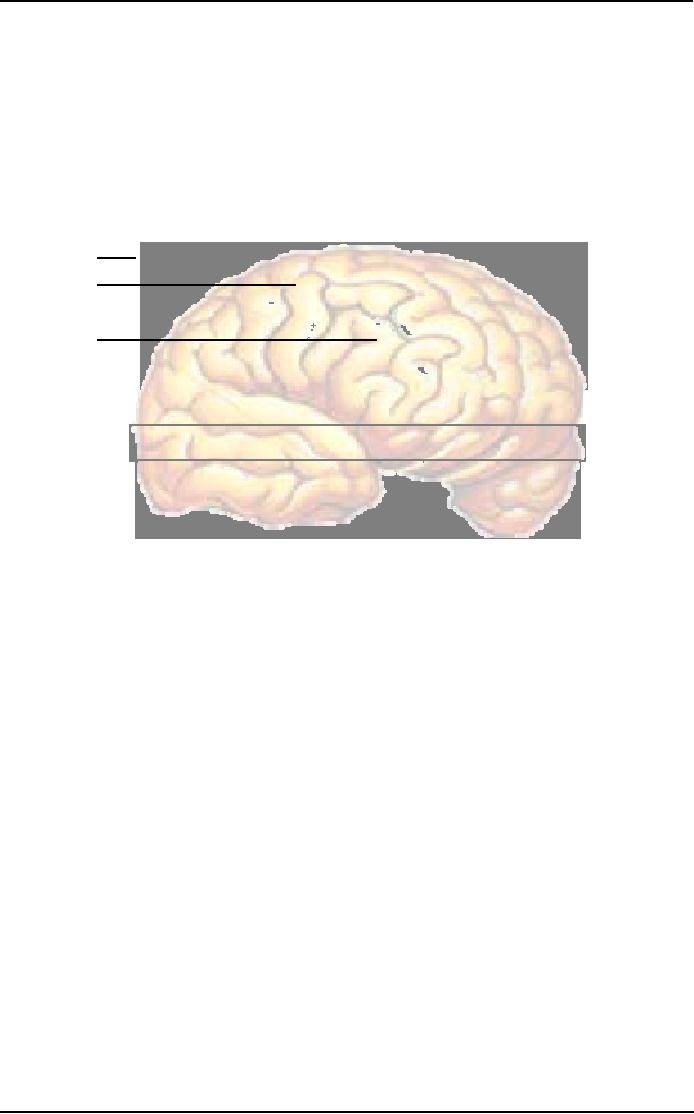 |

Leadership
& Team Management MGMT
623
VU
Lecture
42
CREATIVE
LEADERSHIP
God the
almighty Allah has created
the mankind and given them the wisdom
with knowledge and the
brain
with capability to think and
make a difference. One can't
believe how powerful is
Brain and Mind
of
this creature we called them
human?
Brain
And The Universe
1.
Brain
has 10 billion nerve
cells
2.
Total
Atoms in the Universe=1 0000000000,
0000000000, 0000000000,
0000000000,
0000000000, 0000000000, 0000000000,
0000000000, 0000000000,
0000000000,
3.
Possible
Inter-Connections in the
brain=1 0000000000,
0000000000, 0000000000,
0000000000,
0000000000,
0000000000,
0000000000,
0000000000,
0000000000, 0000000000,
0000000000,
0000000000,
0000000000,
0000000000,
0000000000,
0000000000, 0000000000,
0000000000,
0000000000,
0000000000,
0000000000,
0000000000,
0000000000, 0000000000,
0000000000,
0000000000,
0000000000,
0000000000,
0000000000,
0000000000, 0000000000,
0000000000,
0000000000,
0000000000,
0000000000,
0000000000,
0000000000, 0000000000,
0000000000,
0000000000,
0000000000,
0000000000,
0000000000,
0000000000, 0000000000,
0000000000,
0000000000,
0000000000,
0000000000,
0000000000
0000000000, 0000000000,
0000000000,
0000000000,
0000000000,
0000000000,
0000000000,
0000000000, 0000000000,
0000000000,
0000000000,
0000000000,
0000000000,
0000000000,
0000000000, 0000000000,
0000000000,
0000000000,
0000000000,
0000000000,
0000000000,
0000000000, 0000000000,
0000000000,
0000000000,
0000000000,
0000000000,
0000000000,
0000000000, 0000000000
4.
Brain
cell inter-connections more than the
total universe-
atoms?
5.
We
are using 10 % of our brains
6.
Brain
is a self expanding and self
organizing entity
Critical/Creative
Thinking: is the
intellectually disciplined process of
actively and
skillfully
conceptualizing,
applying, analyzing, synthesizing,
and/or evaluating information gathered
from, or
generated
by, observation, experience, reflection,
reasoning, or communication, as a guide to
belief and
action.
Scriven,
M., & Paul, R. (1992,
Critical Thinking Conference, Atlanta,
GA.
Characteristics
of Creative/Critical Thinkers:
o
Curiosity
o
Open
mindedness
o
Systematic
ability
o
Analyticity
o
Self-confidence
o
Truth
seeking attitude
o
Cognitive
maturity
Creativity
Is
Creativity?
o
Mysterious
to understand
o
Unlimited
in scope
o
Meant
for all historical
times
o
Lies
in every activity
o
Possessed
by all
o
Luxury
of advanced nations
o
Can it
be developable?
Myths
about the Process of Developing
Creativity:
o
Creativity
is natural gift it cannot be
taught
193

Leadership
& Team Management MGMT
623
VU
o
Creativity
is in revolutionary
o
Creativity
lies in right-brain
o
Art,
artists only has
creativity
o
Releasing
blocks will bring
creativity
o
Intuition
alone helps creativity
o
Needs
craziness for
creativity
o
Intelligence
and creativity are
same
From
Wikipedia, the free encyclopedia, I
will reproduce few Para's
for the understanding of
you.
"Creativity
(or
creativeness)
is a mental process involving the
generation of new ideas or
concepts, or
new
associations between existing ideas or
concepts.
From
a scientific point of view, the products
of creative thought (sometimes
referred to as divergent
thought)
are usually considered to have both
originality
and
appropriateness.
An alternative, more
everyday
conception of creativity is that it is
simply the act of making something
new.
Although
intuitively a simple phenomenon, it is in
fact quite complex. It has
been studied from the
perspectives
of behavioural psychology, social
psychology, psychometrics, cognitive
science, artificial
intelligence,
philosophy, history, economics, design
research, business, and management,
among
others.
The studies have covered everyday
creativity, exceptional creativity and
even artificial
creativity.
Unlike many phenomena in
science, there is no single,
authoritative perspective or
definition
of
creativity. Unlike many
phenomena in psychology, there is no standardized
measurement technique.
Creativity
has been attributed
variously to divine intervention,
cognitive processes, the social
environment,
personality traits, and
chance ("accident", "serendipity"). It
has been associated
with
genius,
mental illness and humour.
Some say it is a trait we
are born with; others
say it can be taught
with
the application of simple
techniques.
Although
popularly associated with
art and literature, it is
also an essential part of
innovation and
invention
and is important in professions such as
business, economics, architecture,
industrial design,
science
and engineering.
Despite,
or perhaps because of, the
ambiguity and multi-dimensional nature of
creativity, entire
industries
have been spawned from the
pursuit of creative ideas and the
development of creativity
techniques.
This mysterious phenomenon, though
undeniably important and constantly
visible, seems to
lie
tantalizingly beyond the grasp of
scientific investigation."
Creativity,
it has been said, consists
largely of re-arranging what we
know in order to find out
what we
do
not know." George
Kneller
"To
live
a
creative
life,
we
must
lose
our
fear
of
being
wrong."
Joseph
Chilton Pierce
"Creativity
is inventing, experimenting, growing,
taking risks, breaking rules, making
mistakes, and
having
fun."
Mary
Lou Cook
So
what makes creative people
creative? If we could look into the minds
of creative geniuses,
what
would
we see?
Six
Tips to Help You Enhance Your
Creativity:
1.
Open
Your Mind - Have
one new experience every
day; no matter how small.
New experiences
stimulate
the brain and help you make
new and original connections;
critical for boosting
breakthroughs.
2.
Diversify
- Involve
others in your problem-solving
efforts that bring a
different perspective or
cultural
experience than yours.
194

Leadership
& Team Management MGMT
623
VU
3.
Mental
Floss Relax; Stress,
exhaustion, boredom and even
pain can block our pathways
to
creativity.
4.
Stop
Looking For the Right
Answer - Look
for many right
answers.
5.
Discover
Your Creative Rhythm - Start paying
attention to when you get
your best ideas.
6.
Health
Makes Wealth - Regular
exercise not only benefits
your body, it boosts brain
performance
as
well.
Innovative
Thinking: Six Simple Secrets
by
Padi Selwyn, M.A.
Those
who wish to sing, always
find a song.
Swedish
proverb
Some
tools and technique which
might help you to develop
creative mind and also help
you in the
process
of creativity.
Awaken
Your Senses
o
Relax
in a comfortable chair
o
Close
your eyes
o
Concentrate on
some pleasant thought
o
Create
A mental image of something you enjoy
doing
o
Actually
see, feel, smell, taste, and
hear you imaginary
surroundings
Brainstorming
o
Identify
as many different ideas as
possible
o
List
all relevant ideas
generated
o
Can be
done by one person or by a
group
o
Used
most often in connection
with problem solving
Role
Play
o
The
process of acting through a
situation without all the
real characters being
present
o
Practice
through role playing with
someone else
Experiment
o
Experiment
with different ideas.
o
Sometimes,
you have to try putting the
pieces together in different ways in
order to see what
happens.
Mental
Exercises
o
Keeps
thinking sharp,
o
Solving
puzzles, reading mystery
stories, doing word games,
playing board games.
Creative
Problem Solving
o
Develop
a creative atmosphere/attitude
o
Identify
the problem
o
Determine
the facts
o
Identify
possible solutions
o
Let
the problem simmer
o
Determine
the best SOLUTION
Creative
Traits
o
Imagination
o
Verbal
ability
o
Conceptual
ability
o
Mental
awareness
o
Ability
to reason logically
o
Ability
to think rapidly
o
Mental
flexibility
o
Ability
to think nontraditional
195

Leadership
& Team Management MGMT
623
VU
Personality
Traits
Recognition
o
Frequently
take independent
action
o
Enjoy
risk-taking
o
Prefer
working with minimal or
no
o
Desire
praise & dislike
failure
supervision
o
Exhibit
high energy levels
o
Prefer
variety and change
o
Seek
new challenges and
experiences
o
Often
impatient with other
people
o
Creativity
Can Be Developed
o
Study
o
Concentration
o
Practice
o
Patience
Creativity
and Leadership. Why is this question
important?
The
significance of creativity and leadership in
both the workplace and the world at
large, and thus they
need
o
to
understand how creativity and leadership
actually operate in domains, organizations, and
the
general
society
o
to
enhance, whenever possible and
necessary, the amount of creativity and leadership
manifested in
a
domain, organization or
society
How
Might These Definitions Be
Integrated?
Impact
through products - innovative ideas,
inventions, solutions, policies,
programs, strategies,
o
tactics,
reforms, initiatives, laws, regulations,
etc.
Examples:
Creativity and leadership in
Small
problem-solving groups (R & D units,
research laboratories)
o
Professional
domains, economic systems, and political
institutions
o
Organizational
Methods to Enhance Creativity
o
Systematically
collecting fresh ideas
o
Brainstorming
o
Empowering
people
o
Encourage
risk taking
o
Engaging
in playful physical
activities
Leadership
Practices for Enhancing
Creativity
o
Intellectual
challenge
o
Freedom to
choose the method
o
Ample
supply of the right
resources
o
Effective
design of work groups
o
Supervisory
encouragement
o
Organizational
support
o
Having
favorable exchanges with
creative workers
Methods
of Managing Creative Workers
o
Give
creative people tools and
resources that allow their
work to stand out
o
Give
creative people flexibility and a
minimum amount of structure
o
Give
gentle feedback when turning
down an idea
o
Employ
creative people to manage
and evaluate creative
workers
Leadership
Initiatives to Enhance
Innovation/Creativity
o
Continually
pursue innovation
o
Take
risks and encourage risk
taking
o
Acquire
innovative companies
196

Leadership
& Team Management MGMT
623
VU
o
Avoid
innovation for its own
sake
o
Loose-tight
leadership enhances creativity and
innovation
o
Integrate
development and production
o
Encourage
people across divisions to
share ideas
Threats
to Team Creativity
o
Social
loafing
o
Conventionality
o
Production
blocking
o
Downward
norm setting
"If
you don't like something,
change it. If you can't
change it, change the way
you think about
it."
Unknown creative
197
Table of Contents:
- INTRODUCTION, ORGANIZATION THE STAGE FOR LEADERSHIP:Challenges, Value creation
- FOCUSING ON PEOPLE: THE KEY TO SUCCESS:People in the Process, Developing and Sustaining A World-class Workforce
- LEADERSHIP:Characteristics of Successful Leader, Why Study Leadership?
- LEADERSHIP (CONTD.):Characteristics of Leaders Who Fail, Why Leaders Fail?
- MANAGERS VS LEADERS:Characteristics, Effective Leadership, Respect for Diversity
- FOLLOWER-SHIP:Importance of Followers, Follower-ship Style
- LEADERSHIP PROCESS:Strategies for Cultivating Exemplary Followers, Important Traits of Leaders
- LEADERSHIP PROCESS (CONTD.):Qualities of Leaders, Self-Confidence, Integrity
- LEADERSHIP THEORIES/ APPROACHES:Personal Characteristics of Leaders, Managerial Grid
- CONTINGENCY THEORIES OF LEADERSHIP:The Fiedler Model, Situational Leadership Theory, Path-Goal Theory
- TRANSACTIONAL, CHARISMATIC AND TRANSFORMATIONAL LEADERSHIP:Visionary Leadership
- THE LEADER AS AN INDIVIDUAL:Personality, Situation, Heredity, Environment
- ATTITUDE-PERSONALITY:Job Satisfaction, Work Situation, Self - Monitoring
- BIG FIVE MODEL, MYERS BRIGGS TYPE INDICATOR (MBTI):Sub-Categories Defined, Information Gathering
- SITUATIONAL FACTORS:Social and psychological climate, Culture of the organization
- BECOMING A LEADER! WHAT DOES IT MEAN & HOW DO YOU GET IT?:Mission Statement, Leading oneself
- BECOMING A LEADER:Elements of Leadership, CONCEPT OF POWER,
- UNDERSTANDING POWER:Sources of Power, Responses to the Use of Power, Managing Political Behavior
- LEADERSHIP POWER & INFLUENCE:Positional Power, Being an Effective Leader
- LEADERSHIP AND EMPOWERMENT:Power sharing and Empowerment, Share Information
- MOTIVATION:Guidelines for Delegating, Human Resource Approach
- MOTIVATION AT WORK, MOTIVATION AND LEADERSHIP:What Factors Diminish Motivation in the Workplace
- LEADERSHIP COMMUNICATION:Communication & the Four Management Functions
- REVIEW-1:Organizational Performance, That is the Role of Management?, Leaders Vs Managers
- GROUP & TEAM CONCEPT:Groups versus Teams, Deciding When to Use a Team
- TEAM DYNAMICS:Stages of Group Development, Problem-Solving Teams, Benefits of Teams
- BUILDING THE TEAM:Leadership success requires, Strategies for Team Building
- A TEAM-BASED ORGANIZATION:Basic Steps, Span of Control, Categories of Decisions
- DECISION MAKING:Categories of Decisions, The Decision-Making Process
- TEAM DECISION MAKING:Team Problem Solving Techniques, Concept of QC
- EFFECTIVE TEAM COMMUNICATION:Team/Group Communications
- CONFLICT IN TEAM:Sources of Conflict, Scarcity of Resources, Dysfunctional Outcomes
- TRAINING/LEARNING OF TEAM:Training Methods, Phases of Learning Cycles
- LEARNING ORGANIZATION:A Litmus Test, Work Relations
- REWARDING & RECOGNIZING TEAMWORK:Compensating Teams, Individual or Team Rewards?
- MANAGING/LEADING VIRTUAL TEAMS:Communications in Virtual Organizations, Virtual Leadership
- EFFECTIVE TEAM MEETINGS:Better Meetings, Meeting Roles, Meeting Room Facilities
- LEADING TEAM:Team Leadership Structures, Leadership Demands and Duties, Leadership Direction
- REVIEW-II:Types of Teams, Characteristics of High Performance Teams, Sources of Conflict
- STRATEGIC LEADERSHIP:Strategic Management, Determining Strategic Direction, Developing Human Capital:
- LEADING CHANGE:Dynamics of Change, Change Models, Unfreeze
- CREATIVE LEADERSHIP:Awaken Your Senses, How Might These Definitions Be Integrated
- ETHICS IN LEADERSHIP:Character Traits Reflect Ethics, Manifests Honesty
- LOOKING AT THE FUTURE: WHAT COMES NEXT:Benefits of Teams, Ethical Leadership,
- TEAMWORK: LEARNING FROM NATURE:Social Behavior, Termites, Learning from Nature